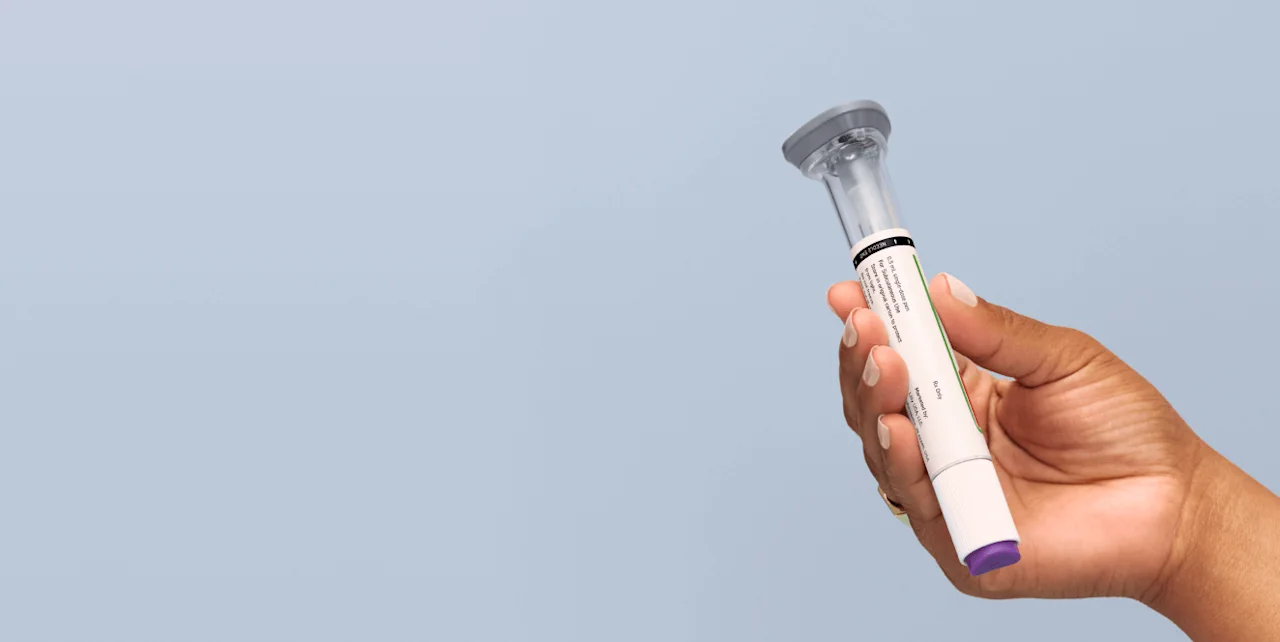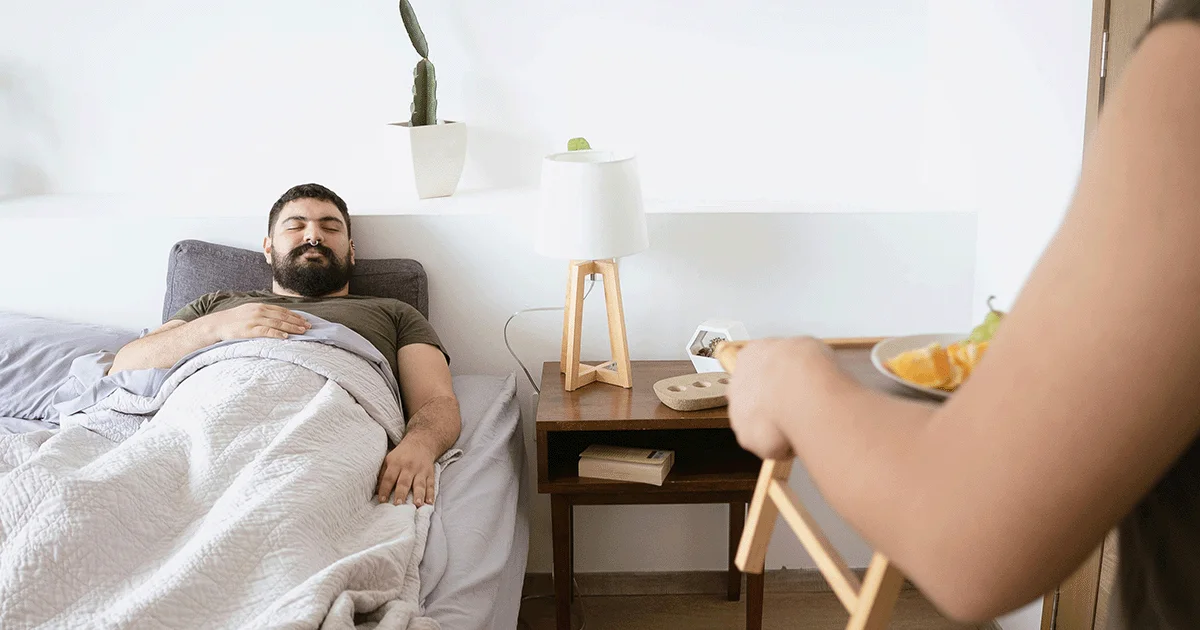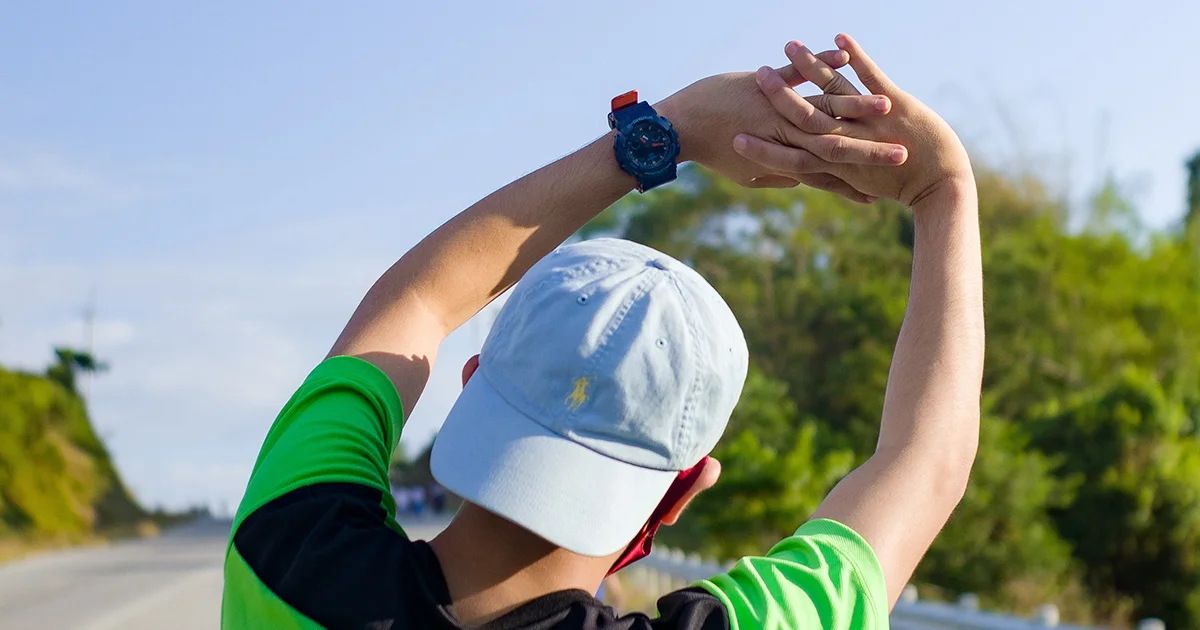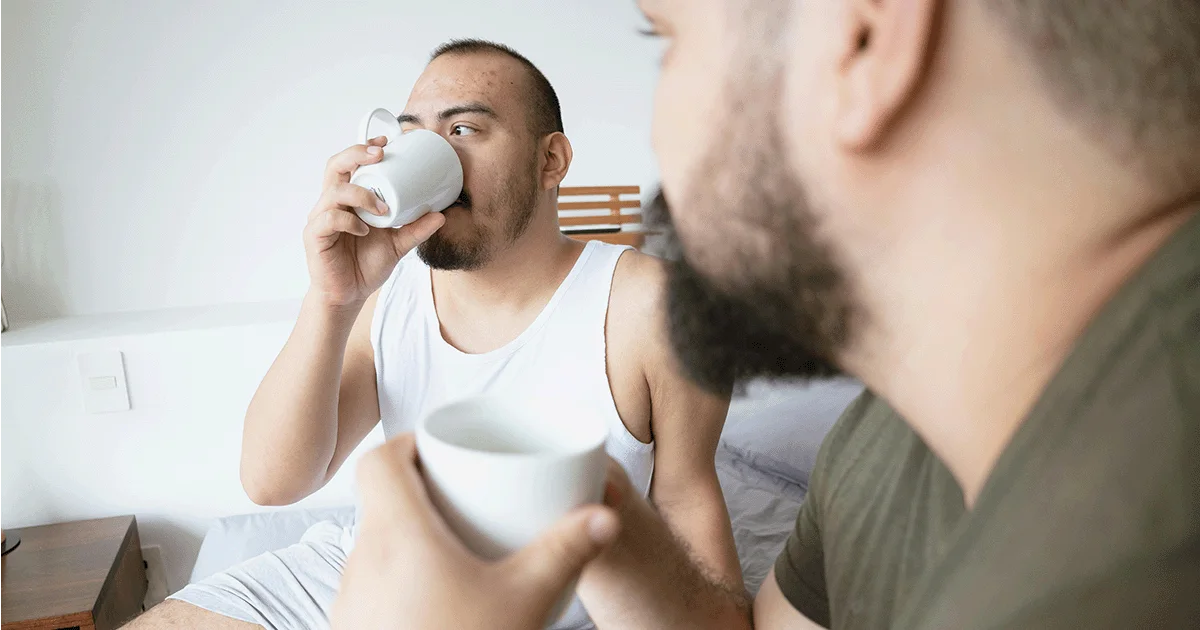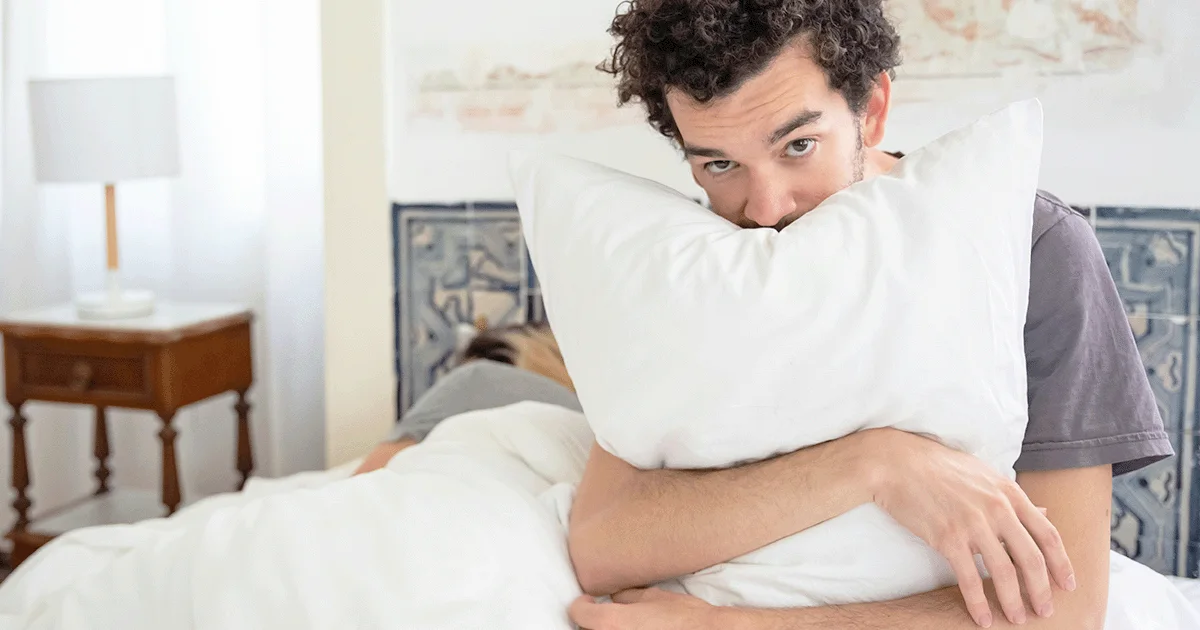Key takeaways
There are no foods that are completely off-limits while you’re taking Zepbound, but cutting out or limiting certain foods such as those high in sugar or fat could help reduce side effects.
Here's what we'll cover
Key takeaways
There are no foods that are completely off-limits while you’re taking Zepbound, but cutting out or limiting certain foods such as those high in sugar or fat could help reduce side effects.
Diet is a crucial part of treatment with Zepbound, but there’s no fixed diet you have to follow to see this medication work. So while no foods are strictly “off-limits’ while taking Zepbound, adjusting your diet may help relieve some of the side effects of Zepbound, which are typically digestive in nature, ranging from belching and indigestion to nausea and diarrhea. And getting into the habit of making more conscious food choices has the added bonus of supporting your weight loss goals.
Read on as we review the foods to avoid on Zepbound.
Zepbound Important Safety Information: Read more about serious warnings and safety info.
What types of food should you avoid while taking Zepbound?
Again, no foods are known to dangerously interact with Zepbound. However, removing or limiting some of the foods and drinks below may relieve your side effects and help you enjoy more success with Zepbound.
1. Fried and greasy foods
Fried foods, like those you might order when eating out, are associated with both an upset stomach and bloating. More generally, eating out is associated with digestive discomfort like stomach ache. Removing fried and greasy foods from your diet may help alleviate some of the digestive symptoms of Zepbound.
It’s also worth noting that these foods may hinder your weight loss progress on Zepbound. A recent study found that eating fried food increases your risk for obesity and weight gain. Plus, research suggests that people who frequently eat fried food are more likely to develop type 2 diabetes or coronary artery disease.
If possible, try to eat at home more, but whether you eat out or not, opt for meals prepared with healthier cooking methods, such as steaming, baking, boiling, or grilling.
2. Fatty foods
Multiple studies have linked fatty foods to having an upset stomach. Specifically, the more fat you add to a meal, the more likely you are to experience symptoms like bloating, nausea, and indigestion. Eli Lilly, the manufacturer of Zepbound, also recommends avoiding fatty foods in order to relieve nausea when taking Zepbound.
Like fried foods, regularly eating fatty foods is associated with weight gain, as well as overeating. So, opting for lower-fat options instead may help you enjoy more success losing weight on Zepbound. Even small changes can make a difference. For example, consider using an air fryer or the oven rather than a frying pan for making things like french fries at home so you can skip the grease.
3. Sugary sweets and treats
The relationship between sugar and weight gain is fairly straightforward: the more high-sugar foods you eat, the more likely you are to gain weight or overeat — two outcomes you probably want to avoid when taking Zepbound. Beyond that, consuming sugary foods can spike your blood sugar and, subsequently, your insulin levels. The elevated insulin eventually causes your blood sugar levels to drop quickly leaving you hungrier than before, spurring a cycle of snacking.
Sugar can show up in surprising places, so review the nutrition label when shopping at the grocery store. Consider avoiding processed foods as much as possible and try to reduce the amount of sugar you add to your morning coffee.
Be aware that sugar is addictive, so quitting it can be a hard habit to break! But it is possible. If you tend to turn to sugar for stress relief — as many people do — explore other ways to manage your stress, such as:
Deep breathing exercises
Progressive muscle relaxation
Mindfulness meditation
Exercise (which happens to be recommended for Zepbound to work its best)
Guided imagery or visualization
Talk therapy
4. Refined carbohydrates
Earlier, we mentioned that sugar can appear in surprising places. Well, here’s one of them. Refined carbohydrates are basically sugar in disguise. Refined carbohydrates describe a category of foods like pasta, white bread, bagels, and cereal. These foods seem benign enough, but because they have a high glycemic index, they cause your blood sugar to spike.
Plus, refined carbohydrates contain fewer nutrients — including less fiber, protein, and B vitamins — than their whole-grain counterparts. As a result, including too many of these foods in your diet gives you more calories than nutrition, which can hinder your weight loss efforts.
Instead, get your carbs from healthier options that will help you feel more full, such as whole grains, nuts, beans, fruits, and vegetables. Replacing at least three daily servings of refined grains with healthier foods not only improves diet but leads people to eat less overall, according to one study of over 34,000 adults.
5. Carbonated beverages
Carbonated sodas tend to contain a lot of sugar and are one way many people consume extra empty calories. Soda consumption is linked with weight gain, independent of what else you eat. So, cutting out soda and other sweetened beverages can be a healthy step to help you lose weight while taking Zepbound.
Besides soda, carbonated beverages in general, contain more air than non-carbonated beverages. Whether it’s beer, soda, or even unsweetened carbonated water, drinking these beverages increases gastric volume — which may make you more likely to experience bloating or abdominal pain while taking Zepbound. Opting for non-carbonated beverages (think green tea or plain old water) can reduce bloating and help you stay hydrated when using Zepbound.
6. Alcohol
If you’ve ever experienced a hangover, you know it can produce some of the same uncomfortable side effects as Zepbound, including nausea and vomiting. But, you may not know that drinking alcohol more frequently — whether every day or a few days a week — raises your likelihood of experiencing GERD, another potential side effect of Zepbound.
Plus, alcohol can contain many of the empty calories associated with added sugar. And binge drinking may lead to weight gain or a “beer belly.” Exploring healthier drink options can help you limit your alcohol intake while taking Zepbound. Health experts recommend a maximum of one drink per day for women and up to two drinks per day for men.
What is Zepbound used for?
Zepbound is an FDA-approved prescription medication that helps people lose weight when used in combination with diet and exercise. It may be prescribed to people with either:
A body mass index, or BMI, of 30 or higher (defined as obesity)
A BMI of 27 or higher and a weight-related comorbid health condition, such as high blood pressure, high cholesterol, type 2 diabetes, obstructive sleep apnea, or heart disease
Zepbound is injected weekly under the skin of the thigh, abdomen, or upper arm. In clinical trials, people taking Zepbound lost between 15%–21% of their body weight within a year and a half, depending on their dosage of Zepbound. The people taking a placebo, by comparison, lost only 3% of their body weight using diet and exercise alone.
Side effects of Zepbound
Zepbound’s most common side effects include:
Nausea
Diarrhea
Vomiting
Abdominal pain
Upset stomach or indigestion
Injection site reactions (e.g. rash)
Belching
Gastroesophageal reflux disease (GERD)
As you may have noticed, a majority of Zepbound’s side effects are gastrointestinal in nature. Some of these, such as nausea, vomiting, and diarrhea, are most common when you begin taking Zepbound and go away as your body gets used to the medication. In the meantime, adjusting what you eat may help reduce the intensity of these digestive side effects.
Zepbound nausea relief
Nausea is the most common side effect associated with Zepbound, affecting between 25%–33% of people who take the medication. The good news is that nausea is most common when you first begin taking Zepbound. Still, it can be frustrating and uncomfortable to deal with during that time.
Eli Lilly, the drug maker behind Zepbound, offers the following advice to relieve nausea while taking Zepbound:
Eat smaller meals
Split your meals into smaller portions over the course of the day (e.g. three meals become four or five smaller ones)
Stop eating once you feel full
Avoid fatty foods, such as butter or cheese
Try eating bland foods that are easy on the stomach, like toast, crackers, or rice
If you experience nausea or any other side effect of Zepbound that feels particularly severe or doesn’t go away, contact your health provider. Sometimes dose adjustments or medication changes can help alleviate symptoms without putting a halt to your weight loss journey.
DISCLAIMER
If you have any medical questions or concerns, please talk to your healthcare provider. The articles on Health Guide are underpinned by peer-reviewed research and information drawn from medical societies and governmental agencies. However, they are not a substitute for professional medical advice, diagnosis, or treatment.
References
Bundrick, S. C., Thearle, M. S., Venti, C. A., et al. (2014). Soda consumption during ad libitum food intake predicts weight change. Journal of the Academy of Nutrition and Dietetics, 114(3), 444–449. doi:10.1016/j.jand.2013.09.016. Retrieved from https://www.ncbi.nlm.nih.gov/pmc/articles/PMC3944604/
Cahill, L. E., Pan, A., Chiuve, S. E., et al. (2014). Fried-food consumption and risk of type 2 diabetes and coronary artery disease: a prospective study in 2 cohorts of US women and men. The American Journal of Clinical Nutrition, 100(2), 667–675. doi:10.3945/ajcn.114.084129. Retrieved from https://pubmed.ncbi.nlm.nih.gov/24944061/
Camps, G., de Graaf, K., & Smeets, P. A. M. (2018). Men and Women Differ in Gastric Fluid Retention and Neural Activation after Consumption of Carbonated Beverages. The Journal of Nutrition, 148(12), 1976–1983. doi:10.1093/jn/nxy230. Retrieved from https://pubmed.ncbi.nlm.nih.gov/30517723/
Conrad, Z., Kowalski, C., Dustin, D., et al. (2022). Quality of Popular Diet Patterns in the United States: Evaluating the Effect of Substitutions for Foods High in Added Sugar, Sodium, Saturated Fat, and Refined Grains. Current Developments in Nutrition, 6(9), nzac119. doi:10.1093/cdn/nzac119. Retrieved from https://www.ncbi.nlm.nih.gov/pmc/articles/PMC9464903/
Eli Lilly. (2023). Dosing, How to Use & How to Inject | Zepbound (tirzepatide). Retrieved from https://www.zepbound.lilly.com/how-to-use
Jastreboff, A. M., Aronne, L. J., Ahmad, N. N., et al. (2022). Tirzepatide Once Weekly for the Treatment of Obesity. The New England Journal of Medicine, 387(3), 205–216. doi:10.1056/NEJMoa2206038. Retrieved from https://www.nejm.org/doi/10.1056/NEJMoa2206038
Khodarahmi, M., & Azadbakht, L. (2016). Dietary fat intake and functional dyspepsia. Advanced Biomedical Research, 5, 76. doi:10.4103/2277-9175.180988. Retrieved from https://www.ncbi.nlm.nih.gov/pmc/articles/PMC4863403/
Li, Y., Su, Z., Li, P., et al. (2020). Association of Symptoms with Eating Habits and Food Preferences in Chronic Gastritis Patients: A Cross-Sectional Study. Evidence-Based Complementary and Alternative Medicine: eCAM, 2020, 5197201. doi:10.1155/2020/5197201. Retrieved from https://www.ncbi.nlm.nih.gov/pmc/articles/PMC7368216/
MedlinePlus. (2022). Carbohydrates. Retrieved from https://medlineplus.gov/ency/article/002469.htm
MedlinePlus. (2023). Hangover treatment. Retrieved from https://medlineplus.gov/ency/article/002041.htm
Pan, J., Cen, L., Chen, W., et al. (2019). Alcohol Consumption and the Risk of Gastroesophageal Reflux Disease: A Systematic Review and Meta-analysis. Alcohol and Alcoholism (Oxford, Oxfordshire), 54(1), 62–69. doi:10.1093/alcalc/agy063. Retrieved from https://pubmed.ncbi.nlm.nih.gov/30184159/
Pesce, M., Cargiolli, M., Cassarano, S., et al. (2020). Diet and functional dyspepsia: Clinical correlates and therapeutic perspectives. World Journal of Gastroenterology, 26(5), 456–465. doi:10.3748/wjg.v26.i5.456. Retrieved from https://www.ncbi.nlm.nih.gov/pmc/articles/PMC7015717/
Qin, P., Liu, D., Wu, X., et al. (2022). Fried-food consumption and risk of overweight/obesity, type 2 diabetes mellitus, and hypertension in adults: a meta-analysis of observational studies. Critical Reviews in Food Science and Nutrition, 62(24), 6809–6820. doi:10.1080/10408398.2021.1906626. Retrieved from https://pubmed.ncbi.nlm.nih.gov/33825582/
Raber, M., Chandra, J., Upadhyaya, M., et al. (2016). An evidence-based conceptual framework of healthy cooking. Preventive Medicine Reports, 4, 23–28. doi:10.1016/j.pmedr.2016.05.004. Retrieved from https://www.ncbi.nlm.nih.gov/pmc/articles/PMC4929050/
Sanders, L. M., Zhu, Y., Wilcox, M. L., et al. (2021). Effects of Whole Grain Intake, Compared with Refined Grain, on Appetite and Energy Intake: A Systematic Review and Meta-Analysis. Advances in Nutrition (Bethesda, Md.), 12(4), 1177–1195. doi:10.1093/advances/nmaa178. Retrieved from https://pubmed.ncbi.nlm.nih.gov/33530093/
Stinson, E. J., Piaggi, P., Ibrahim, M., et al. (2018). High Fat and Sugar Consumption During Ad Libitum Intake Predicts Weight Gain. Obesity (Silver Spring, Md.), 26(4), 689–695. doi:10.1002/oby.22124. Retrieved from https://pubmed.ncbi.nlm.nih.gov/29504262/
Traversy, G., & Chaput, J. P. (2015). Alcohol Consumption and Obesity: An Update. Current Obesity Reports, 4(1), 122–130. doi:10.1007/s13679-014-0129-4. Retrieved from https://www.ncbi.nlm.nih.gov/pmc/articles/PMC4338356/
Tryon, M. S., Stanhope, K. L., Epel, E. S., et al. (2015). Excessive Sugar Consumption May Be a Difficult Habit to Break: A View From the Brain and Body. The Journal of Clinical Endocrinology and Metabolism, 100(6), 2239–2247. doi:10.1210/jc.2014-4353. Retrieved from https://www.ncbi.nlm.nih.gov/pmc/articles/PMC4454811/
U.S. Food & Drug Administration (FDA). (2023). Zepbound (tirzepatide) Injection, for subcutaneous use. Retrieved from https://www.accessdata.fda.gov/drugsatfda_docs/label/2023/217806s000lbl.pdf
